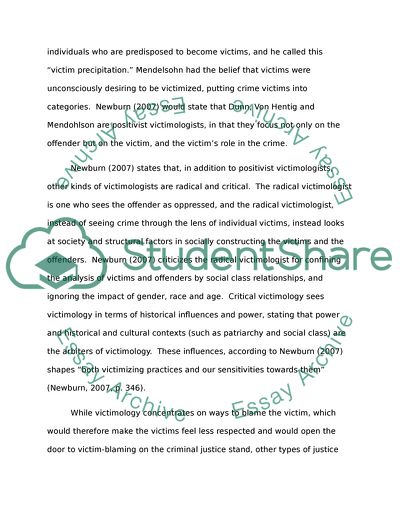Cite this document
(The Place of the Victim in the Criminal Justice System Coursework, n.d.)
The Place of the Victim in the Criminal Justice System Coursework. https://studentshare.org/sociology/1775081-victimology-the-place-of-the-victim-in-the-criminal-justice-system-assess-the-view-that-victims-feel-left-out-of-the-whole-process
The Place of the Victim in the Criminal Justice System Coursework. https://studentshare.org/sociology/1775081-victimology-the-place-of-the-victim-in-the-criminal-justice-system-assess-the-view-that-victims-feel-left-out-of-the-whole-process
(The Place of the Victim in the Criminal Justice System Coursework)
The Place of the Victim in the Criminal Justice System Coursework. https://studentshare.org/sociology/1775081-victimology-the-place-of-the-victim-in-the-criminal-justice-system-assess-the-view-that-victims-feel-left-out-of-the-whole-process.
The Place of the Victim in the Criminal Justice System Coursework. https://studentshare.org/sociology/1775081-victimology-the-place-of-the-victim-in-the-criminal-justice-system-assess-the-view-that-victims-feel-left-out-of-the-whole-process.
“The Place of the Victim in the Criminal Justice System Coursework”. https://studentshare.org/sociology/1775081-victimology-the-place-of-the-victim-in-the-criminal-justice-system-assess-the-view-that-victims-feel-left-out-of-the-whole-process.


